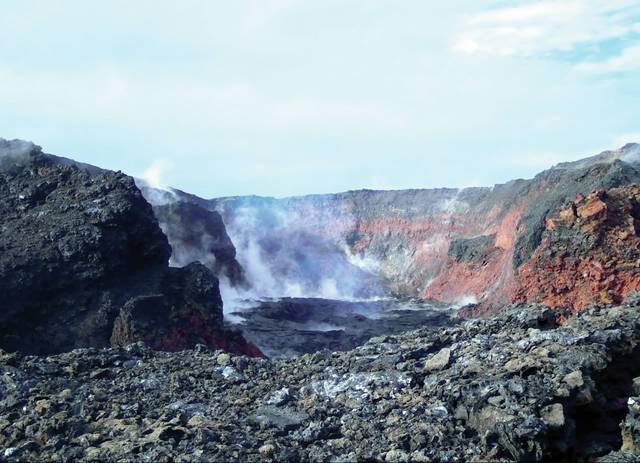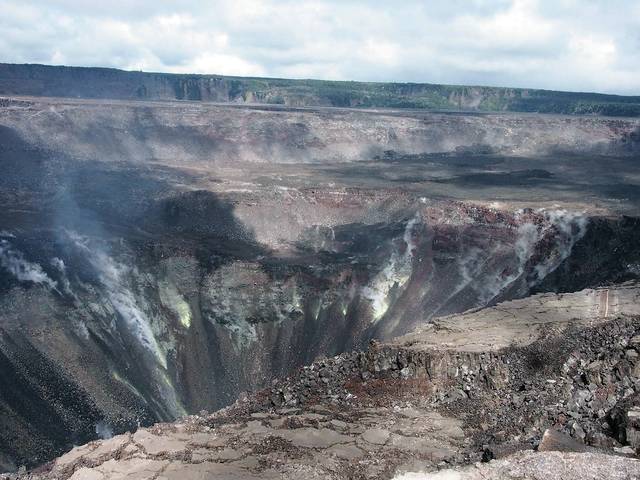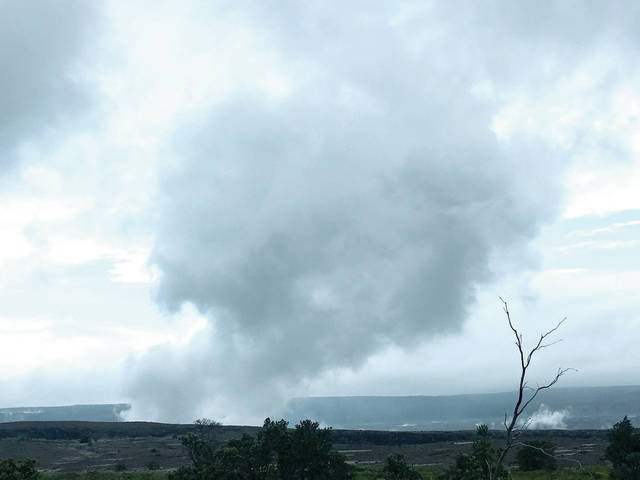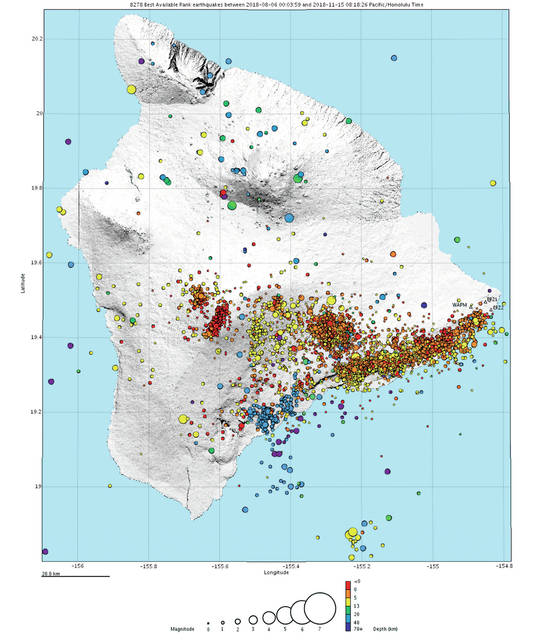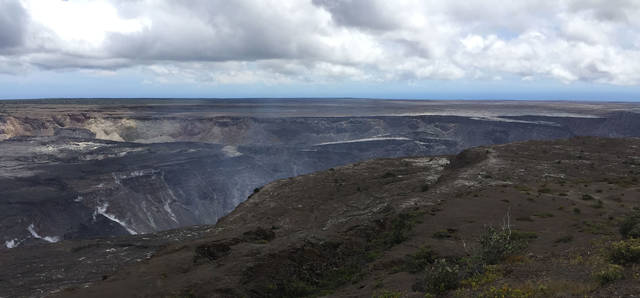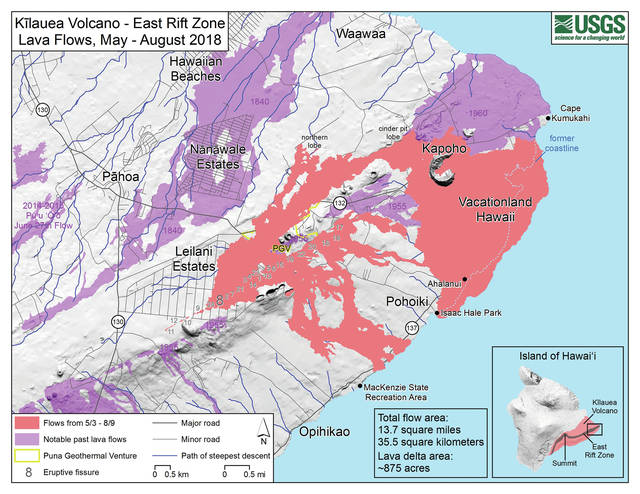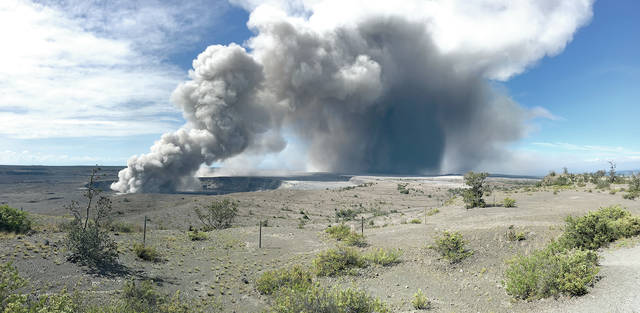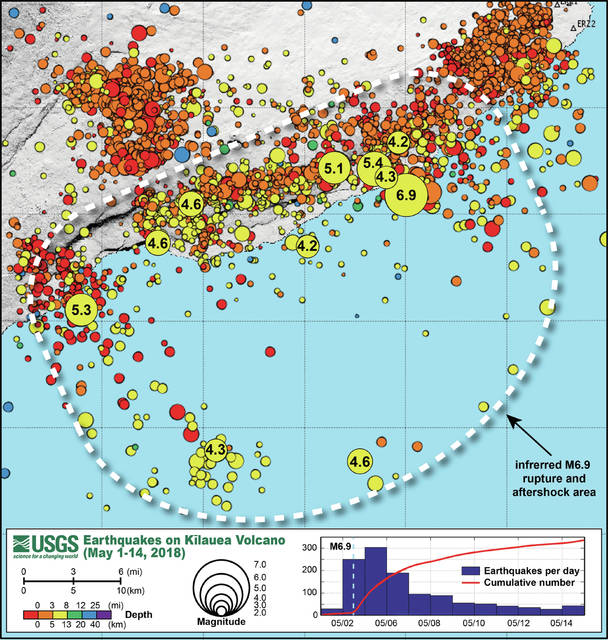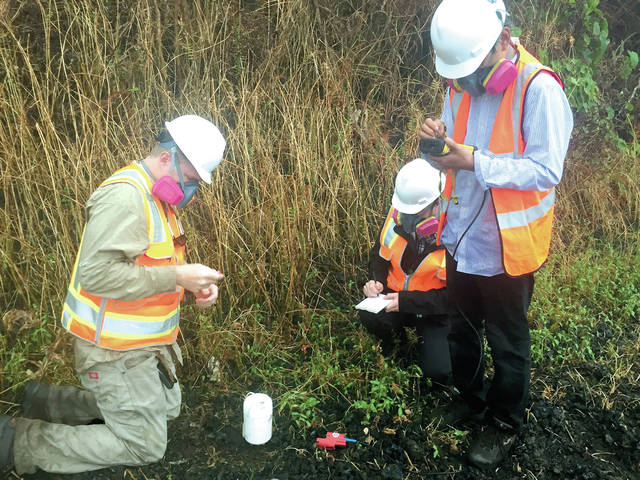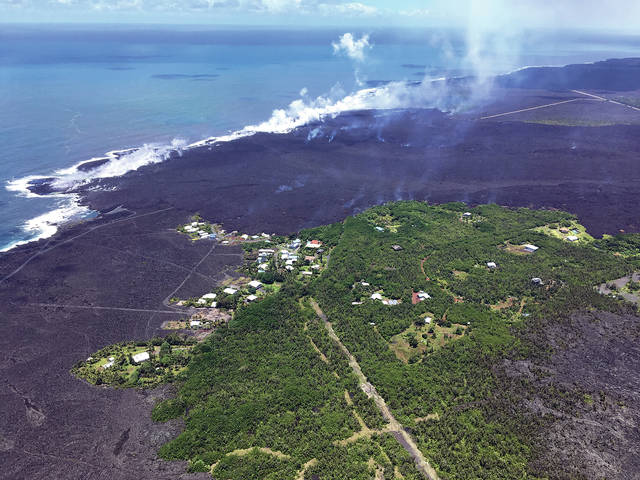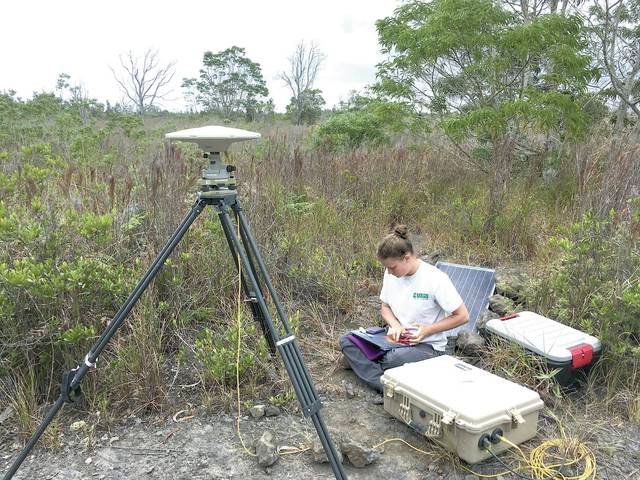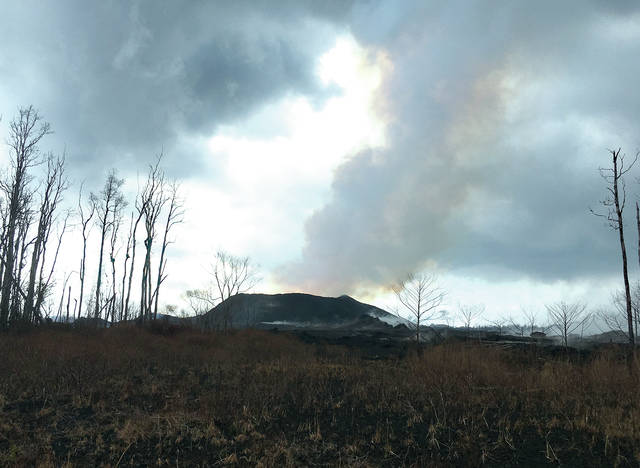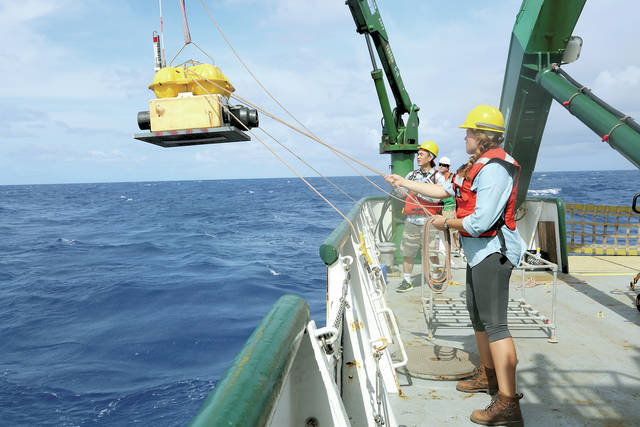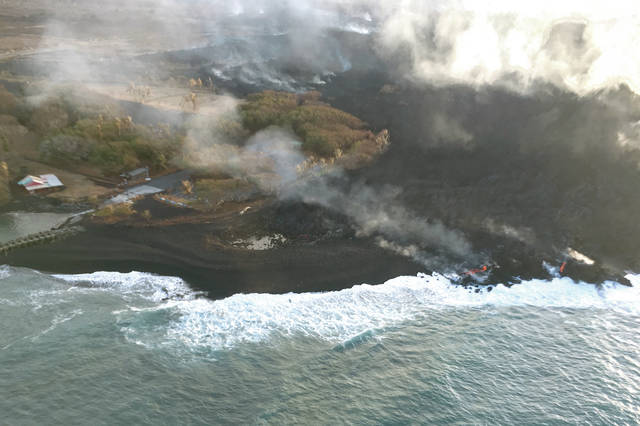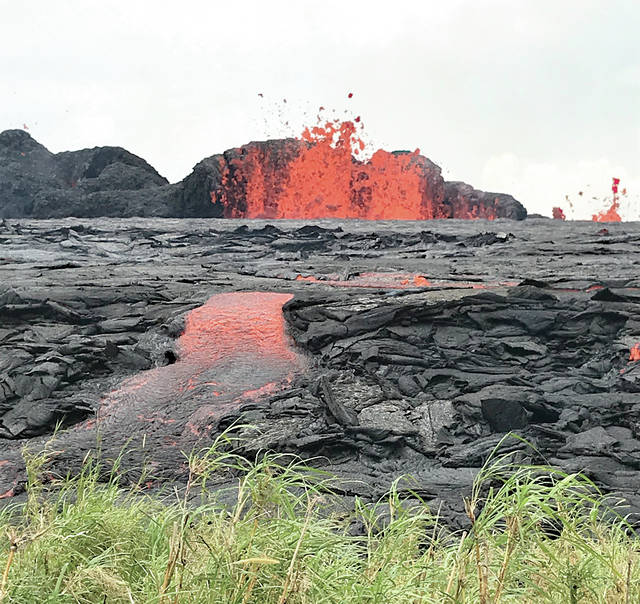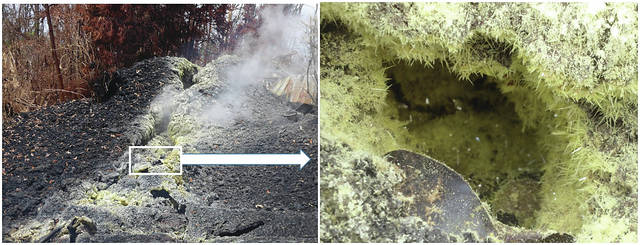Volcano Watch: 90 days with no lava — a milestone for Kilauea’s 2018 eruption
One of the most frequently asked questions of USGS Hawaiian Volcano Observatory scientists during the past several months has been “Is the eruption over?”
Volcano Watch: Now is an exciting time at Kilauea
This is, without a doubt, the most intellectually exciting time to be a volcanologist at the USGS Hawaiian Volcano Observatory. The current inactivity at Kīlauea has so many possible outcomes that it is a real challenge to figure out what might happen next. And intellectual challenges are stimulating and exciting.
Volcano Watch: We’re giving thanks for clean air, but what’s that new smell?
In this season of giving thanks, Island of Hawaii residents and visitors can be thankful for the return of good air quality, generally free of volcanic air pollution.
Volcano Watch: Hawaiian Volcano Observatory adapts to recent changes
November 2018. Has it already been six months since lava began flowing through Hawaii County’s lower Puna district? Has it only been three months since activity at fissure 8 ended rather abruptly?
Volcano Watch: A summit collapse 150 years ago had similarities to the 2018 collapse
The prolonged yet dramatic partial collapse of Kilauea caldera this past summer was the first to be observed in detail and the largest measured by subsidence volume of more than a dozen summit collapses in the past 200 years.
Volcano Watch: How are lava-flow maps made during an eruption?
During Kilauea Volcano’s recent lower East Rift Zone (LERZ) eruption, lava-flow maps were a staple of the public outreach effort by the USGS Hawaiian Volcano Observatory.
Volcano Watch: Kilauea 2018 events mark watershed for volcano science
The 2018 summit collapse and lower East Rift Zone eruption at Kilauea Volcano were dramatic and, for many Hawaii Island residents, tragic events. As with all eruptive crises, these events offered exceptional opportunities to learn more about how volcanoes work and to answer some “bigger picture” questions.
Kilauea hazard assessments include analyses of salts on volcanic ash
Sulfur dioxide (SO2)-rich emissions have long been a feature of Kilauea Volcano’s summit activity. However, vigorous volcanic ash production during the 2018 eruption raised new concerns about potential impacts for downwind communities.
Volcano Watch: Aftershocks of the magnitude-6.9 quake in May expected to continue
On May 4, a powerful magnitude-6.9 earthquake on the south flank of Kilauea Volcano shook the Island of Hawaii. It was the largest quake in Hawaii in 43 years. Today, more than five months later, smaller-magnitude earthquakes in the same area are still occurring.
Volcano Watch: Seismic array deployed to better understand magma transport
Kilauea Volcano’s 2018 lower East Rift Zone eruption and summit collapse provided a rare opportunity to study dynamic eruptive processes beneath and at the surface of the volcano.
Scientists share lessons from Kilauea at Cities on Volcanoes conference
In 1902, Thomas A. Jaggar, a geologist and founder of the Hawaiian Volcano Observatory, visited the scene of one of the most deadly volcanic disasters in modern history: Mount Pelee on the Caribbean Island of Martinique.
Volcano Watch: Scientific community lends a hand to measure Kilauea’s changing shape
The USGS Hawaiian Volcano Observatory has an extensive network of instruments that helps us monitor how the ground deforms due to magma moving underground. However, we are fortunate that scientific colleagues also pitched in to support our responses to Kilauea Volcano’s lower East Rift Zone eruption and summit collapse.
Volcano Watch: Voggy skies from days gone by — reviewing Kilauea’s gas release
Many Hawaii Island residents are familiar with the volcanic air pollution known as vog. The main culprit in the formation of vog is sulfur dioxide gas (SO2) released from Kilauea’s eruptions (see vog.ivhhn.org/what-vog for more information).
Volcano Watch: Submarine Kilauea also impacted by recent events on the volcano
The visible part of Kilauea from the summit to the Lower East Rift Zone makes up only a small portion of the total volcano. Much of Kilauea lies beneath the sea, including the Puna ridge to the east and the south flank extending offshore beyond the southern coastline.
Volcano Watch: Is Kilauea’s summit and rift zone activity pau or paused?
Since the morning of Aug. 4, activity at Kilauea Volcano’s summit and its lower East Rift Zone has diminished dramatically — and the slowdown continues. But what does it mean?
Volcano Watch: How long will Kilauea volcano’s lower East Rift Zone eruption continue?
“How long will it last?” is one of the most challenging questions asked about a volcanic eruption, including Kilauea volcano’s current lower East Rift Zone eruption.
Volcano Watch: Geochemical detective work helps answer questions about Kilauea’s ongoing eruption
“What’s happening inside the volcano?” That’s just one of many questions asked about Kilauea’s ongoing lower East Rift Zone eruption. Looking at the geochemistry of erupted lava can help us answer these questions.
Volcano Watch: The mixture of lava and seawater creates an explosive hazard
Since May 3, Kilauea Volcano’s lower East Rift Zone eruption has destroyed more than 700 structures, covered more than 32 sq km (12.4 sq mi) of land with black lava and added about 700 acres of new land to the island. Yet, remarkably, injuries were few.
Volcano Watch: Many forms of sulfur are found on Kilauea Volcano
For many Hawaii residents, interactions with Kilauea Volcano’s eruptions is through vog — a hazy mixture of sulfur dioxide gas and sulfate particles. However, sulfur on Kilauea is not limited to vog components.
Volcano Watch: How does the current activity at Kilauea caldera stack up against other volcanoes worldwide?
We are currently witnessing extraordinary events at the summit of Kilauea Volcano.

